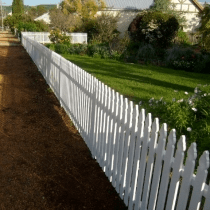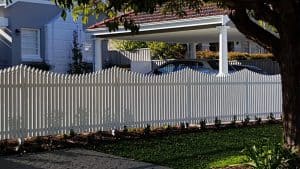A new fence or gate is a long-term investment, which is why it’s essential you get it right the first time around. To ensure your new fence meets Australia’s rules and regulations, check out our guidelines below!
Fence Heights
There are varying rules regarding fence heights, as they vary between different states, territories and local councils, but they also differ depending on where the fence is situated.
Before constructing, or hiring someone to construct your fence, it’s best you contact your local council to find out exactly what rules apply in your area.
Fencing Materials
Fencing companies and individual contractors have to meet certain standards for their fencing materials. These standards relate to all materials, including COLORBOND and timber. When materials meet these standards, consumers can rest assured their fence is made from sturdy products that are designed to withstand the elements.
Dividing Fences
Any fence that separates your property from your neighbour’s property is referred to as a dividing fence. Each state government in Australia has laws in place that regulate the building and maintenance of these types of fences, as well as any disputes that may arise.
For instance, in Western Australia, the Dividing Fences Act of 1961 outlines how the costs associated with building and maintaining the fence should be shared and how any disputes over dividing fences should be handled.
Pool Fencing
There are a number of rules and safety regulations in place to ensure homeowners with swimming pools have pool fences that adhere to Australia’s strict safety regulations. The Australian standards AS2820, AS2818 and AS1926 specify that:
The Australian standards AS2820, AS2818 and AS1926 specify that:
- Pool gates need to be mounted, and when opened, they should swing away from the pool zone. The gate should also be self-closing, meaning that after it’s been opened it will swing shut and latch closed.
- The latch on a pool gate needs to be a minimum of 1.5 metres off the ground. If it’s installed any lower than this, it needs to be enclosed to ensure no little fingers can manage to get it open when the pool is unattended.
- All pool fences and pool gates need to be at least 1.2 metres high and any gaps between vertical pickets shouldn’t be any more than 100 millimetres.
However, keep in mind that these regulations can vary between each state and territory and the specific requirements of your local council might also differ.
A well-constructed fence and gate, whether it’s a dividing fence, pool fence or a front gate, will not only increase how secure your property is, it will also enhance the aesthetic appeal of your home’s outdoor areas. To ensure your fence meets your expectations, as well as the relevant Australian regulations, make sure you only hire a licensed contractor, like Feature Fencing.
Contact us today for more information on fencing and gates in Perth.




